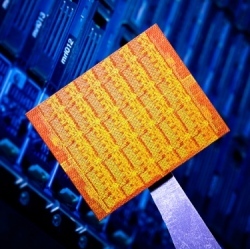
Stanford Engineering‘s Center for Turbulence Research (CTR) has set a new record in computational science by successfully using a supercomputer with more than 1.5 million computing cores to solve a complex fluid dynamics problem: the prediction of noise generated by a supersonic jet engine.
Joseph Nichols, a research associate in the center, worked on the newly installed Sequoia IBM Bluegene/Q system at Lawrence Livermore National Laboratories (LLNL) funded by the Advanced Simulation and Computing (ASC) Program of the National Nuclear Security Administration (NNSA).
Because of Sequoia’s impressive numbers of cores, Nichols was able to show for the first time that million-core fluid dynamics simulations are possible — and also to contribute to research aimed at designing quieter aircraft engines.
The physics of noise
The exhausts of high-performance aircraft at takeoff and landing are among the most powerful human-made sources of noise.
For ground crews, even for those wearing the most advanced hearing protection available, this creates an acoustically hazardous environment. To the communities surrounding airports, such noise is a major annoyance and a drag on property values.
Understandably, engineers are keen to design new and better aircraft engines that are quieter than their predecessors. New nozzle shapes, for instance, can reduce jet noise at its source, resulting in quieter aircraft.
